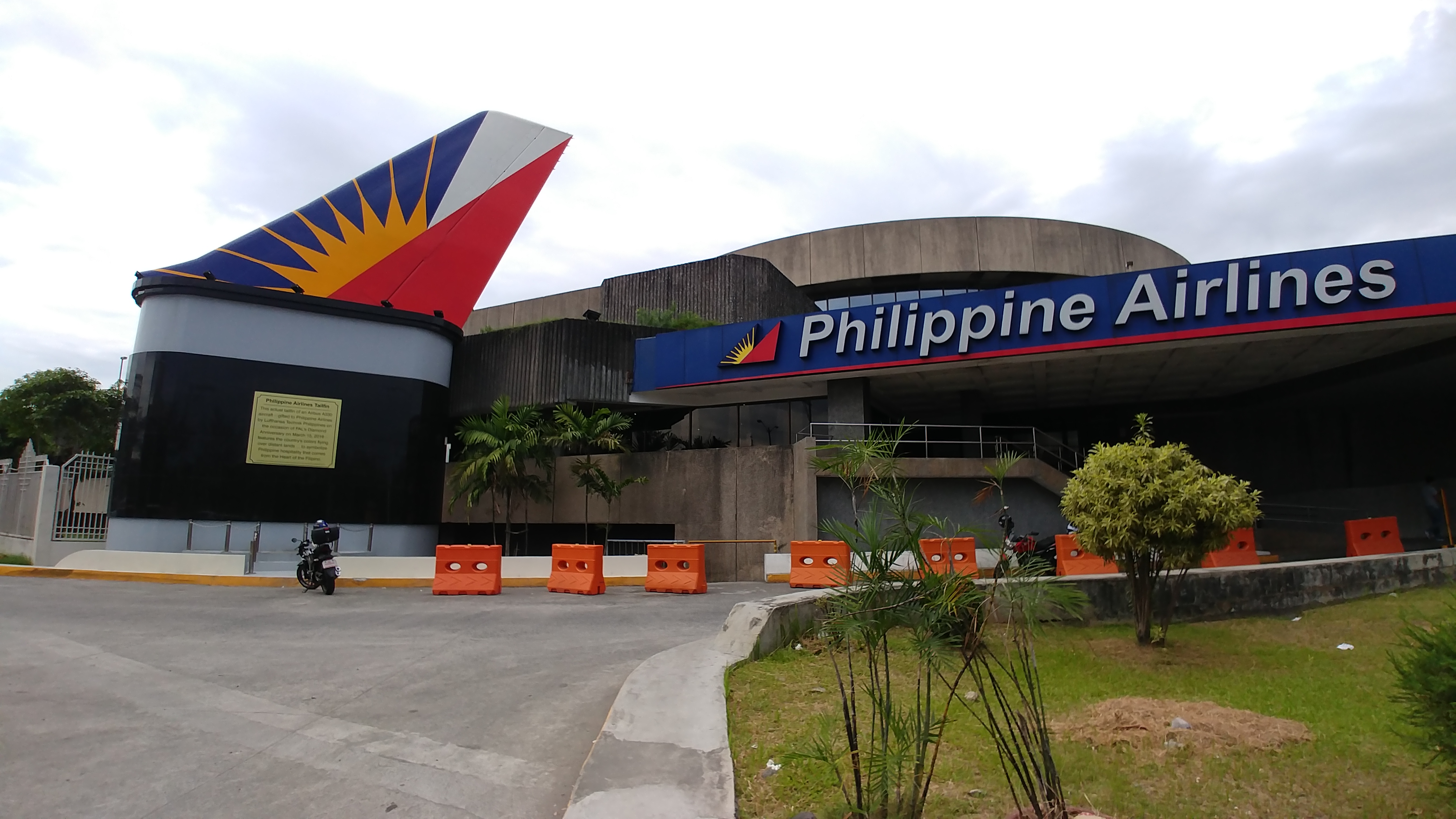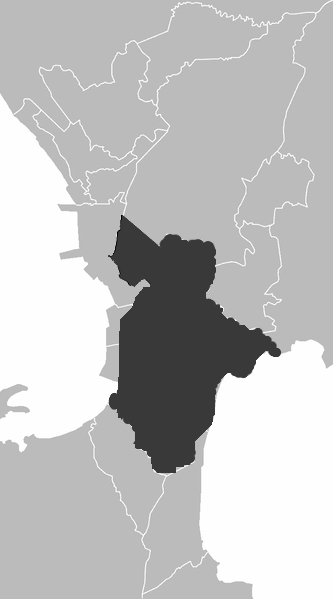|
Airlink International Aviation College
Air Link International Aviation College, also referred to by its acronym ALIAC or simply as Air Link, is a private, aviation-oriented educational institution located at the General Aviation Area of the Domestic Airport in Pasay, Metro Manila, Philippines. The main campus features 28 aircraft, single and twin-engined, and a hangar next to a classroom building. Another campus, located on the island of Lubang, Occidental Mindoro, provides facilities for intensive training for both flying and ground students. History ALIAC was founded in 1982 by Captain Geronimo Amurao, a Philippine Airlines pilot, when he established a small flying school which he called the "Amurao Flying School". In 1984, this small aviation school grew to become the "Air Link International Aviation School" under the stewardship of Capt. Amurao, with the help of his wife, Dr. Myrna Tan Vallecer-Amurao. In April 2003, its name was amended to "Air Link International Aviation College". In 2017, Atty. Gomeriano V. A ... [...More Info...] [...Related Items...] OR: [Wikipedia] [Google] [Baidu] |
Commission On Higher Education (Philippines)
The Commission on Higher Education (CHED; fil, Komisyon sa Mas Mataas na Edukasyon Komisyon sa Lalong Mataas na Edukasyon) is a Philippine government agency attached to the Office of the President of the Philippines for administrative purposes. It covers both public and private higher education institutions as well as degree-granting programs in all post-secondary educational institutions in the country. History The CHED was established on May 18, 1994 through Republic Act No. 7722 or the Higher Education Act of 1994 which was authored by Senator Francisco Tatad. The creation of CHED was part of a broad agenda for reforms in the country's education system, outlined by the Congressional Commission on Education (EDCOM) in 1992. Part of the reforms is the trifocalization of the education sector. The three governing bodies in the education sector are the Commission on Higher Education (CHED) for tertiary and graduate education, the Department of Education (DepEd) for basic educat ... [...More Info...] [...Related Items...] OR: [Wikipedia] [Google] [Baidu] |
Philippines
The Philippines (; fil, Pilipinas, links=no), officially the Republic of the Philippines ( fil, Republika ng Pilipinas, links=no), * bik, Republika kan Filipinas * ceb, Republika sa Pilipinas * cbk, República de Filipinas * hil, Republika sang Filipinas * ibg, Republika nat Filipinas * ilo, Republika ti Filipinas * ivv, Republika nu Filipinas * pam, Republika ning Filipinas * krj, Republika kang Pilipinas * mdh, Republika nu Pilipinas * mrw, Republika a Pilipinas * pag, Republika na Filipinas * xsb, Republika nin Pilipinas * sgd, Republika nan Pilipinas * tgl, Republika ng Pilipinas * tsg, Republika sin Pilipinas * war, Republika han Pilipinas * yka, Republika si Pilipinas In the recognized optional languages of the Philippines: * es, República de las Filipinas * ar, جمهورية الفلبين, Jumhūriyyat al-Filibbīn is an archipelagic country in Southeast Asia. It is situated in the western Pacific Ocean and consists of around 7,641 islands t ... [...More Info...] [...Related Items...] OR: [Wikipedia] [Google] [Baidu] |
Educational Institutions Established In 1984
Education is a purposeful activity directed at achieving certain aims, such as transmitting knowledge or fostering skills and character traits. These aims may include the development of understanding, rationality, kindness, and honesty. Various researchers emphasize the role of critical thinking in order to distinguish education from indoctrination. Some theorists require that education results in an improvement of the student while others prefer a value-neutral definition of the term. In a slightly different sense, education may also refer, not to the process, but to the product of this process: the mental states and dispositions possessed by educated people. Education originated as the transmission of cultural heritage from one generation to the next. Today, educational goals increasingly encompass new ideas such as the liberation of learners, skills needed for modern society, empathy, and complex vocational skills. Types of education are commonly divided into formal ... [...More Info...] [...Related Items...] OR: [Wikipedia] [Google] [Baidu] |
Education In Pasay
Education is a purposeful activity directed at achieving certain aims, such as transmitting knowledge or fostering skills and character traits. These aims may include the development of understanding, rationality, kindness, and honesty. Various researchers emphasize the role of critical thinking in order to distinguish education from indoctrination. Some theorists require that education results in an improvement of the student while others prefer a value-neutral definition of the term. In a slightly different sense, education may also refer, not to the process, but to the product of this process: the mental states and dispositions possessed by educated people. Education originated as the transmission of cultural heritage from one generation to the next. Today, educational goals increasingly encompass new ideas such as the liberation of learners, skills needed for modern society, empathy, and complex vocational skills. Types of education are commonly divided into formal, ... [...More Info...] [...Related Items...] OR: [Wikipedia] [Google] [Baidu] |
Universities And Colleges In Metro Manila
A university () is an institution of higher (or tertiary) education and research which awards academic degrees in several academic disciplines. Universities typically offer both undergraduate and postgraduate programs. In the United States, the designation is reserved for colleges that have a graduate school. The word ''university'' is derived from the Latin ''universitas magistrorum et scholarium'', which roughly means "community of teachers and scholars". The first universities were created in Europe by Catholic Church monks. The University of Bologna (''Università di Bologna''), founded in 1088, is the first university in the sense of: *Being a high degree-awarding institute. *Having independence from the ecclesiastic schools, although conducted by both clergy and non-clergy. *Using the word ''universitas'' (which was coined at its foundation). *Issuing secular and non-secular degrees: grammar, rhetoric, logic, theology, canon law, notarial law.Hunt Janin: "The university ... [...More Info...] [...Related Items...] OR: [Wikipedia] [Google] [Baidu] |
Technical Education And Skills Development Authority
The Technical Education and Skills Development Authority (TESDA ; fil, Pangasiwaan sa Edukasyong Teknikal at Pagpapaunlad ng Kasanayan) serves as the Philippines' Technical Vocational Education and Training (TVET) authority. As a government agency, TESDA is tasked to both manage and supervise the Philippines' Technical Education and Skills Development (TESD). Its goals are to develop the Filipino workforce with "world-class competence and positive work values" and to provide quality technical-educational and skills development through its direction, policies, and programs.“Vision, Mission, Value and Quality Statement.” 2017. Technical Education and Skills Development Authority - TESDA. TESDA. Accessed June 26. http://www.tesda.gov.ph/About/TESDA/11. History Predecessor Technical-Vocational Education was first introduced to the Philippines through the enactment of Commonwealth Act No. 3377, or the “Vocational Act of 1927.” On June 3, 1938, the National Assembly of ... [...More Info...] [...Related Items...] OR: [Wikipedia] [Google] [Baidu] |
Philippine Airlines
Philippine Airlines (PAL), a trade name of PAL Holdings, Inc. ( PSEPAL (Philippine Air Lines until 1970), is the flag carrier airline of the Philippines. Headquartered at the PNB Financial Center in Pasay, the airline was founded in 1941 and is the first and oldest commercial airline in Asia. The airline's main flight operations are located at Ninoy Aquino International Airport in Metro Manila. Its subsidiary PAL Express mainly operates regional routes while PAL operates both domestic (Cebu, Davao, General Santos, Kalibo, Laoag, Manila, and Zamboanga) and international routes. History Philippine Airlines was founded on . Its predecessor company, Philippine Aerial Taxi Company, was founded on December 3, 1930. Formerly one of the largest airlines in Asia, PAL was severely affected by the 1997 Asian financial crisis. In one of the Philippines' biggest corporate failures, PAL downsized its international operations by ending flights to Europe and the Middle East, cutting vir ... [...More Info...] [...Related Items...] OR: [Wikipedia] [Google] [Baidu] |
Occidental Mindoro
Occidental Mindoro ( tl, Kanlurang Mindoro), officially the Province of Occidental Mindoro, is a province in the Philippines located in the Mimaropa region. The province occupies the western half of the island of Mindoro. Its capital is Mamburao, but the largest municipality is San Jose. As of 2020, Occidental Mindoro has 525,354 inhabitants. The province is bordered on the east by the province of Oriental Mindoro, and on the south by the Mindoro Strait. The South China Sea is to the west of the province and Palawan is located to the southwest, across the Mindoro Strait. Batangas is to the north, separated by the Verde Island Passage, a protected marine area and the center of the center of the world's marine biodiversity. History Mindoro Island was originally known to the ancients as ''Ma-i''. It was formally called ''Mait'', and known to the Chinese traders before the coming of the Spanish. Its existence was mentioned in the old Chinese chronicles in 775 A.D. and more elabora ... [...More Info...] [...Related Items...] OR: [Wikipedia] [Google] [Baidu] |
Lubang, Occidental Mindoro
Lubang, officially the Municipality of Lubang ( tgl, Bayan ng Lubang), is a 4th class municipality in the province of Occidental Mindoro, Philippines. According to the 2020 census, it has a population of 17,437 people. The municipality encompasses the north-western half of Lubang Island, as well as Cabra Island. The municipality of Lubang is part of the Lubang Island Group, which constitutes seven islands that are geographically distinct from any landmasses, making the island group biologically unique - and endangered at the same time. The islands are under consideration to be set as a UNESCO tentative site due to its geographic importance, biological diversity, and intact rainforests. Geography Barangays Lubang is politically subdivided into 16 barangays. Climate Demographics Economy Government The Municipality of Lubang like most, if not all of the municipalities in the Philippines elects a Municipal Mayor who deals with the executive affairs of the municipality ... [...More Info...] [...Related Items...] OR: [Wikipedia] [Google] [Baidu] |
Metro Manila
Metropolitan Manila (often shortened as Metro Manila; fil, Kalakhang Maynila), officially the National Capital Region (NCR; fil, link=no, Pambansang Punong Rehiyon), is the capital region, seat of government and one of three List of metropolitan areas in the Philippines, defined metropolitan areas in the Philippines. It is composed of 16 Cities of the Philippines#Legal classification, highly urbanized cities: the Manila, city of Manila, Quezon City, Caloocan, Las Piñas, Makati, Malabon, Mandaluyong, Marikina, Muntinlupa, Navotas, Parañaque, Pasay, Pasig, San Juan, Metro Manila, San Juan, Taguig, and Valenzuela, Metro Manila, Valenzuela, as well as the municipality of Pateros. The region encompasses an area of and a population of as of 2020. It is the second most populous and the most densely populated Regions of the Philippines, region of the Philippines. It is also the List of metropolitan areas in Asia, 9th most populous metropolitan area in Asia and the List of larges ... [...More Info...] [...Related Items...] OR: [Wikipedia] [Google] [Baidu] |
Civil Aviation Authority Of The Philippines
The Civil Aviation Authority of the Philippines (CAAP, ; fil, Pangasiwaan sa Abyasyong Sibil ng Pilipinas) is the civil aviation authority of the Philippines and is responsible for implementing policies on civil aviation to assure safe, economic and efficient air travel. The agency also investigates aviation accidents via its Aircraft Accident Investigation and Inquiry Board. Formerly the Air Transportation Office, it is an independent regulatory body attached to the Department of Transportation (Philippines), Department of Transportation for the purpose of policy coordination. History Legislative Act No. 3909, passed by the Congress of the Philippines on November 20, 1931, created an office under the Department of Commerce and Communications to handle aviation matters, particularly the enforcement of rules and regulations governing commercial aviation as well as private flying. It was amended by Act 3996 to include licensing of airmen and aircraft, inspection of aircraft conc ... [...More Info...] [...Related Items...] OR: [Wikipedia] [Google] [Baidu] |
Pasay
Pasay, officially the City of Pasay ( fil, Lungsod ng Pasay; ), is a 1st class Cities of the Philippines#Legal classification, highly urbanized city in the Metro Manila, National Capital Region of the Philippines. According to the 2020 census, it has a population of 440,656 people. Due to its location just south of Manila, Pasay quickly became an urban town during the History of the Philippines (1898–1946), American colonial period. History Early history In local folk history about the period before the arrival of Spanish colonizers, Pasay is said to have been part of Namayan (sometimes also called Sapa), a confederation of Barangay state, barangays which supposedly controlled territory stretching from Manila Bay to Laguna de Bay, and which, upon the arrival of the Spanish, eventually became known as Santa Ana de Sapa (modern day Santa Ana, Manila). According to these legends, the ruler of Namayan bequeathed his territories in what is now Culi-culi, Pasay, and Baclaran t ... [...More Info...] [...Related Items...] OR: [Wikipedia] [Google] [Baidu] |




.png)

